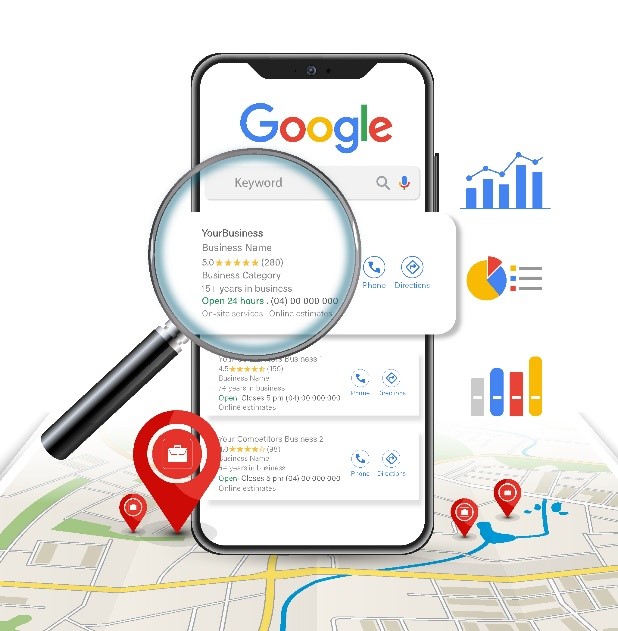Content Marketing Meets Traditional Media: An SEO-Driven Comparison

The tension and synergy between content marketing and traditional media constitute a central debate within journalism and mass communication in the evolving communication landscape. This blog explores the convergence of these paradigms, focusing on SEO (Search Engine Optimization) as the pivot around which this comparison revolves. Drawing from academic insights and practical observations, this analysis is grounded in the pedagogy and media philosophy upheld by Presidency University, particularly within its Presidency School of Media Studies BA (Journalism & Mass Communication) programme.
Establishing the Frameworks: Content Marketing vs. Traditional Media
The secret to content marketing lies in establishing value-added content for the audience to generate brand trust and interest over time. Consider blog posts, Instagram chats, or YouTube how-to videos intended to educate, amuse, or inspire people, subtly lead them to a brand. The language of love on the internet is most useful in clicks and conversions using SEO tactics such as keyword research and backlinks. Conventional media, however, is supported on traditional platforms such as newspapers, television, and radio, and is characterized by refined, widely cast tales that concentrate on reputation and near-real-time.
At Presidency University, this disconnection was raised at our Media Conclave, Redefining Journalism in the Digital Age. The beauty of content marketing (just like any related marketing strategy) lies in its flexibility and the possibility of modifying it based on specific data: imagine changing the meta tags on a blog to be shown higher in the ranking on Google results. Then there is traditional media, which counts on its tradition of reliability, such as a splash story in The Times of India.
However, as we have learned during our BA program, the boundaries are increasingly greying: newspapers are printed in digital formats with SEO-optimized titles, and brands create articles comparable to investigative journalism. Conventional media includes conventional sources, including print (newspapers, magazines), broadcast (television, radio), and outdoor. These are mostly one-way forms of communication, which depend on gatekeeping activities and editorial control. Media professionals select content, the dissemination structure is top-down, and the level of audience feedback is minimal. Content marketing, in turn, is the strategic marketing process that entails the production of relevant, helpful, and regular content to capture and retain a well-defined audience of customers, and, eventually, to guide them to profitable consumer behavior. Unlike regular advertising, content marketing puts user-friendly stories and online feedback at the top of the agenda.
SEO: The Game-Changer

(Source:https://affinixdigital.com/blog/why-local-seo-is-a-game-changer-for-your-business)
Content marketing uses SEO as its secret sauce. It concerns what users type into Google boxes, search “best sustainable fashion label” or “how to go green and cut down the carbon footprint”, and develop content that will address their questions and rank high on Google. Marketers can use tools like Google Analytics and Ahrefs to monitor performance so that each post is a deliberate step. At Presidency School of Media Studies, we learnt that keywords will either put or kill a campaign, where we learnt to match creativity and algorithms.
The historically less SEO-concentrated traditional media is converging. Large platforms such as The Hindu or the BBC optimize their online articles for search engines, but their power does not rest only in keywords. A front-page story has certain clout that a blog post may lack even when it is higher on Google. However, the speed at which content marketing allows brands to respond to trends allows a share of a viral X thread or a TikTok explainer in real time, where traditional media cannot keep up.
Emerging Trends in the Clash

Media trends are an important part of our curriculum at Presidency and some of them are especially obvious during this comparison:
- Personalisation: The AI-led insights content marketing can be used in personalization of content- such as Netflix suggesting a blog to you based on your watching history. This precision is impossible with traditional media, which use a one-to-many relationship, but provide a common cultural experience, such as a prime-time news show.
- Engagement: The second element that defines content marketing is two-way engagement, or, in other words, comments on a blog or likes on an Instagram reel. Traditional media is powerful but the perception of the traditional media looks like a monologue, but it is changing as mediums are using social media and newsletters.
- Long Term vs. Short Term: A blog that has been SEO optimized can outlive its impact with the newspaper most of the times lasting just one day. However, credibility of traditional media can give a story a certain staying power in the discourse of the people, which we have discussed in classes.
Presidency School of Media Studies is gearing us to connect these worlds. The programme, based in Choice-Based Credit System (CBCS) and Outcome-Based Education (OBE), demonstrates that it is necessary to make stories that connect regardless of whether they are SEO-purposed blog posts or research-based stories in the print.
Traditional media holds gravitas and broad reach, while content marketing is fast, accessible, and easily launched. The key lies in blending the two—using SEO to boost credible journalism or bringing journalistic depth to content marketing. It’s not a zero-sum game: a blog can spark wider discourse, and a TV show can drive traffic online. The future is hybrid—audiences want stories backed by data, innovation grounded in tradition. As future communicators, we can shape this balance to ensure media remains impactful and authentic in the digital age.
Written by,
Ms. Radhika H.,
Presidency School of Media Studies













 Rajanukunte, Yelahanka, Bengaluru, Karnataka, Pin: 560119, India
Rajanukunte, Yelahanka, Bengaluru, Karnataka, Pin: 560119, India
 +91 9022092222
+91 9022092222